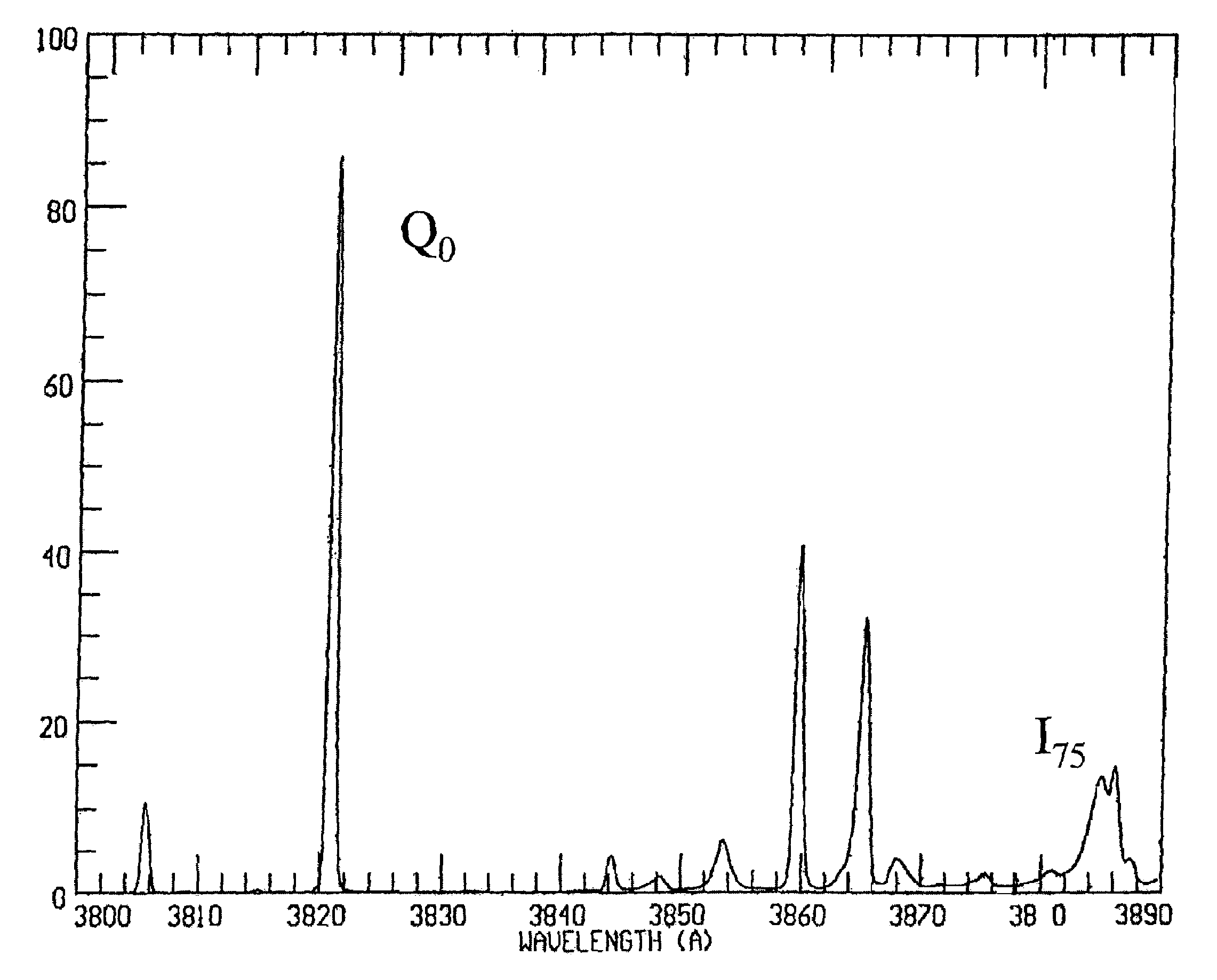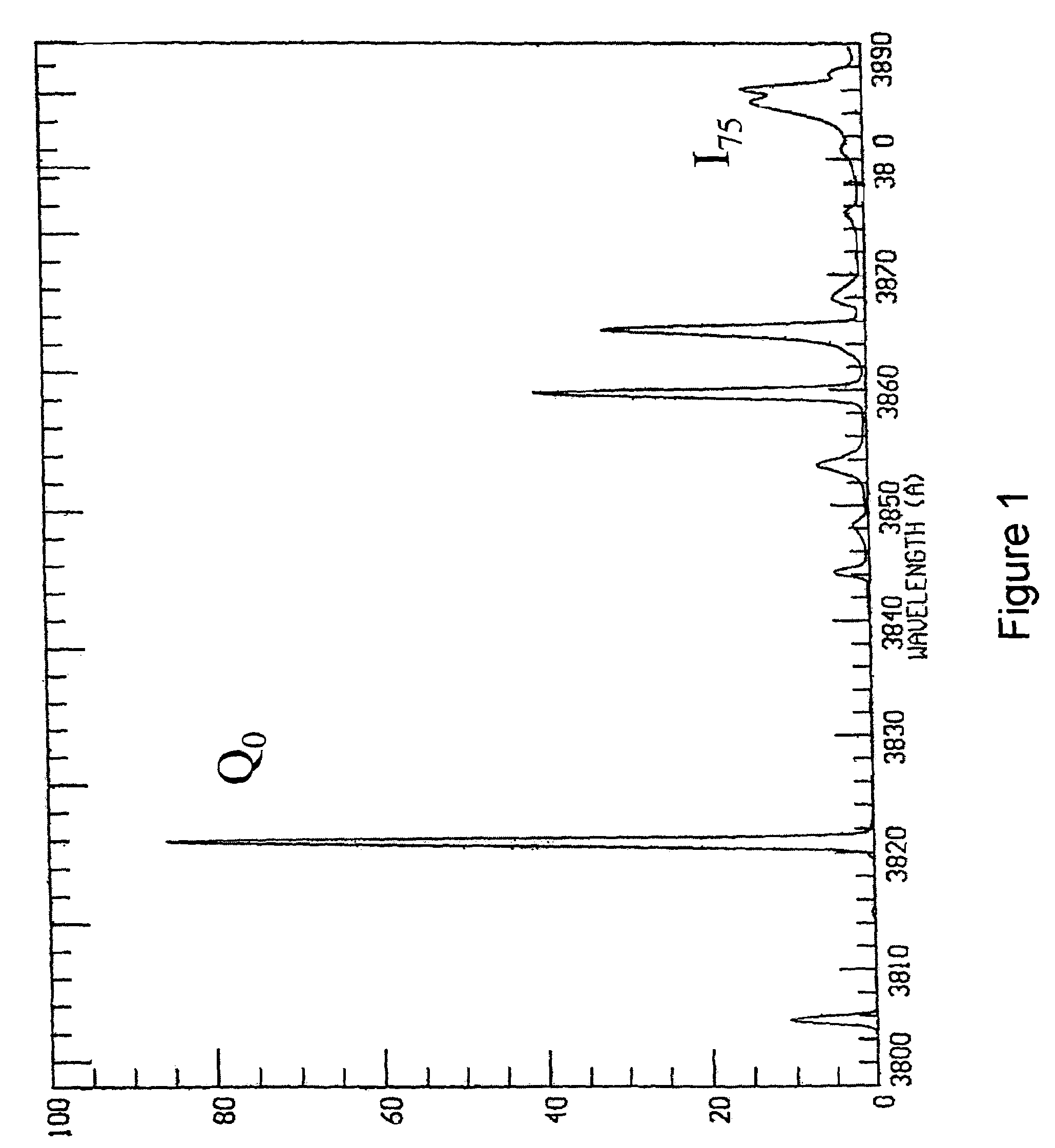Growth of ultra-high purity silicon carbide crystals in an ambient containing hydrogen
a technology of semi-insulating silicon carbide and ambient hydrogen, which is applied in the direction of single crystal growth, polycrystalline material growth, chemistry apparatus and processes, etc., can solve the problems of limiting the types of semiconductor layers that may be fabricated, the control of elemental impurities such as nitrogen within the crystal, and the silicon carbide grown by most techniques is generally too conductive for semi-insulating purposes. , to achieve the effect of enhancing semi-insulating qualities, reducing nitrogen conten
- Summary
- Abstract
- Description
- Claims
- Application Information
AI Technical Summary
Benefits of technology
Problems solved by technology
Method used
Image
Examples
first embodiment
[0023]The invention herein is a method of reducing the nitrogen content of a semi-insulating silicon carbide crystal grown by sublimation and a resulting high purity semi-insulating silicon carbide crystal with a reduced nitrogen concentration therein. the invention introduces a hydrogen or hydrogen-containing ambient atmosphere into a sublimation growth chamber used to grow silicon carbide crystals. Previously standard sublimation systems utilize an argon ambient in the growth of silicon carbide. The inventors herein have discovered that a hydrogen ambient is more useful than other ambient gases to control the nitrogen content of the growing crystal.
[0024]The method of the invention herein includes introducing a silicon carbide source powder and a silicon carbide seed crystal into a sublimation growth chamber. The source powder, as its name implies, provides a source of silicon carbide species in the growth chamber for growing a silicon carbide crystal on a growth surface provided ...
second embodiment
[0035]The method of the invention herein, therefore, is appropriately described in another embodiment as a method of passivating a growing silicon carbide crystal in a sublimation growth chamber to control the nitrogen that can be incorporated into the crystal. the invented method includes introducing an ambient gas containing hydrogen into the growth chamber and heating a silicon carbide source powder to sublimation in the hydrogen ambient growth chamber. The source powder is heated while simultaneously heating and maintaining a silicon carbide seed crystal in the hydrogen ambient growth chamber to a second temperature below the temperature of the source powder. The temperature of the seed crystal is low enough for sublimed species from the source powder to condense upon the seed crystal.
[0036]The hydrogen passivation method, furthermore, maintains the source powder and the seed crystal during sublimation growth at respective temperatures high enough to increase the number of point...
PUM
| Property | Measurement | Unit |
|---|---|---|
| pressure | aaaaa | aaaaa |
| pressure | aaaaa | aaaaa |
| temperature | aaaaa | aaaaa |
Abstract
Description
Claims
Application Information
 Login to View More
Login to View More - R&D
- Intellectual Property
- Life Sciences
- Materials
- Tech Scout
- Unparalleled Data Quality
- Higher Quality Content
- 60% Fewer Hallucinations
Browse by: Latest US Patents, China's latest patents, Technical Efficacy Thesaurus, Application Domain, Technology Topic, Popular Technical Reports.
© 2025 PatSnap. All rights reserved.Legal|Privacy policy|Modern Slavery Act Transparency Statement|Sitemap|About US| Contact US: help@patsnap.com



